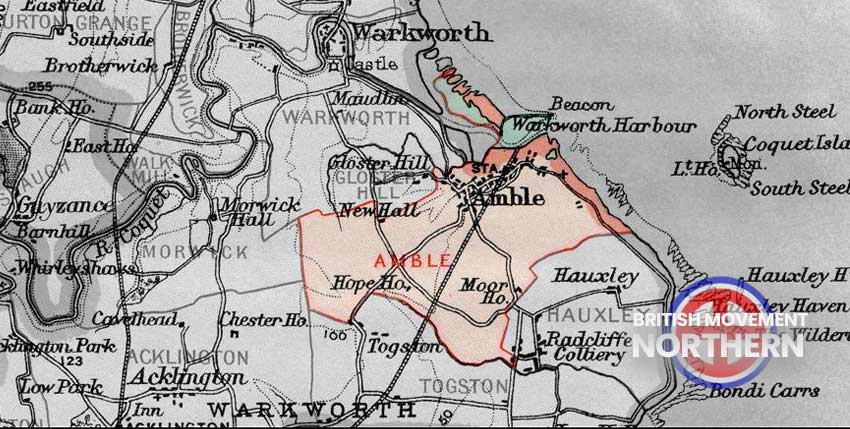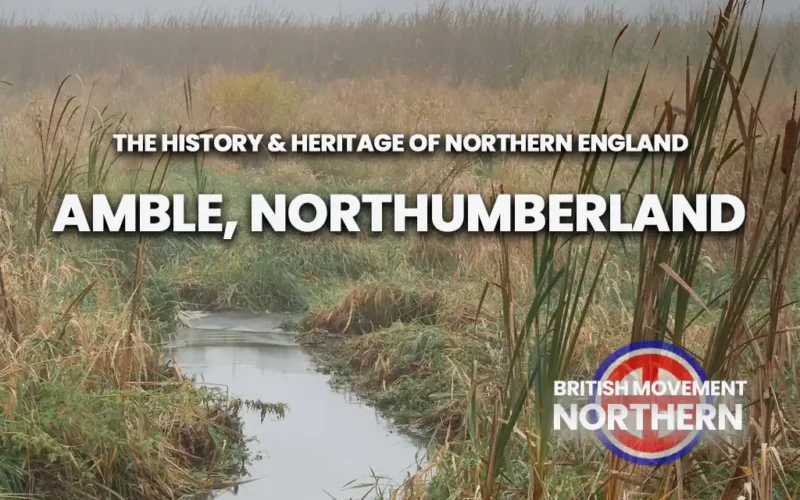Amble is a scenic coastal town with a picturesque, traditional harbour situated on the North East coast at the mouth of the River Coquet. The town’s name is generally accepted to mean ‘Anna’s Bill’ or ‘Anna’s Promontory’, taken from the Old English ‘Annebelle’ and referring to the settlement position at the river mouth.
However, there are some language historians who believe that the original name was “Am Beal”, a Gaelic origin name meaning ‘at the river mouth’ and possibly given to the tiny coastal settlement by early Irish Christian monks in the post-Roman era.
After the Norman Conquest in 1066, the region was granted to the Norman nobleman, the Duke of Northumberland, as a reward for his part in the Battle of Hastings. Most historians state that Amble was not recorded in the Domesday Book but local historians have observed that “the earliest mention of ‘Ambell’ can be found in 1090 when, after the division of the spoils, the manors of ‘Ambell’ were amongst other grants of land given to the Tynemouth Priory by the powerful noble Robert de Mowbray.”
After the dissolution of the monasteries in 1536, the land of ‘Ambell’ became the property of the king. In 1204 the spelling used was Ambell, and by 1610, ‘Speeds Map’ used the name Anbell’. However by 1769, ‘Armstrong’s Map’ was using the modern spelling of Amble.
There is little information available on the settlement in pre-Roman times, but the area was within the territories of the Celtic tribe the Votadini, a large tribe controlling most of what is today coastal Northumberland and south east Scotland. The Votadini later evolved as the kingdom of the Gododdin. The Romans might have used the portage offered by the river mouth, and locally Roman coins and pottery have been found at Gloster Hill.
In the post-Roman period the area became settled by the northern Angles and was part of the kingdom of Bernicia, the settlement that would become Amble was within the territory of the Anglian King Ida.
In the early 7th century, Aelfrith, the powerful warlord of Bernicia, absorbed most territories north of the Humber into the larger Kingdom of Northumbria. The settlement at Amble would have been under his control. In the early Norman period, Amble was part of the estate of Roger Fitz Richard, the baron of Warkworth, and on his death in 1178 passed the estate to the Abbott and convent at Newminster near Morpeth.
It was during the Norman period that salt panning began along the coast around Amble, and the salt trade became locally important. During the medieval era Amble was granted to the early church by the Norman overlord Robert de Mowbray and was included in the estates of Tynemouth Priory.
The village of Amble was originally situated to the south of its modern location, but in 1764 the River Coquet flooded and changed course, consequently Amble relocated to its current position at the mouth of the river. Amble remained a tiny fishing village until the advent of the Industrial Revolution, in fact in 1801 local records give the population of Amble as just 152 people. The increasing employment opportunities pulled in people from along the coast and from inland so by 1861 the population of Amble had increased to 1,275 a rate of increase that continued so that by 1901, it stood at 4,428.
Much of the above population expansion was due to the development of the Northumbrian coal fields, and the increasing industrialisation of the North East. Coal changed everything and Amble became a port used to ship coal to southern Britain. The Warkworth Harbour Commission expanded and modernised the tiny sea port, and the growing facility saw the creation of local ship building and ship repair yards catering for both the small fishing fleet and the transport ships.
The railways came to Amble in 1878 to export coal and to transport fish to inland markets, but the small town never grew to the size of other ports along the coast. Across the 20th Century Amble expanded but never on a large scale; it had brickyards, boat yards and the fishing port, but declining industries took a toll, the railway station and passenger line to Newcastle closed in 1969.
The decline of coal mining, ship building and the scaling down of the fishing industry in the Northumberland region have impacted on Amble, although the local council claims that it is the “most important fishing centre north of the River Tyne.” But the town has survived as a focus for tourism. Particularly in its repair yard for yachts and sailing craft and its proximity to wildlife reserves along the coast including Coquet Island.
The most recent population statistics show that Amble is 98.7% White, a clear recommendation.

CREDITS
Main Image: British Movement.
Lower Image: Public Domain.
The British Movement welcomes articles for possible inclusion on this site from members and supporters across the North of England. Please remember that we have to operate within the laws of this country; we will not include any content that is against the current laws of the United Kingdom. News reports should be topical and be relevant to the regions covered by this website.












